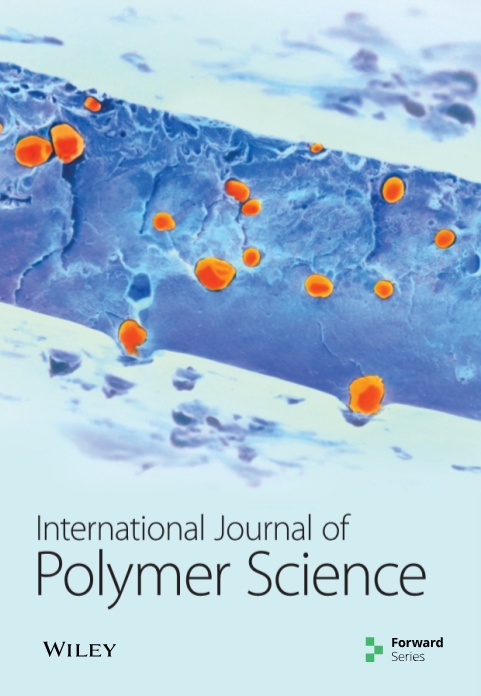Synthesis and Morphology of Flexible Polyurethane Foams Containing Neem Oil and Clove Powder
IF 4.4
4区 化学
Q2 POLYMER SCIENCE
引用次数: 0
Abstract
Polyurethane foams are a versatile class of polymeric materials whose physico-chemical structure and properties can be modified by incorporating additives. This study examined the effect of naturally occurring insect-repelling additives such as neem oil (NO) and clove powder (CP) on the formulation and morphology of flexible polyurethane foam (FPUF) composites. The foams were prepared by the prepolymer method using a box test as applied in the foam industry. The composite material was formulated by varying the isocyanate index (103 and 108) as an excess amount of isocyanate was required to react with the additives. The formulation at 103 was unsuccessful as the foams collapsed immediately after rising. However, at 108, two main categories of foams were successfully prepared: foams containing either NO or CP and the other containing both additives. The effect of these additives on the formulation was examined by monitoring the foam reaction using the cream, tack-free, and rising times. It was observed that the cream, tack-free, and rising times increased with increasing NO/CP content. Conversely, the morphology was studied using scanning electron microscopy (SEM) and optical microscope (OP). The SEM images revealed disruption of the foam network with 1 wt% NO, likewise those containing 1 wt% CP. The cellular network of the foams with simultaneous addition of NO and CP was similar to that of the neat foams and had no broken cell joints and struts due to better dispersion of the additives in the polyurethane matrix. The study indicates that the combined addition of NO and CP modifies the morphology of FPUF, which can influence their physico-mechanical properties.含有印度楝树油和丁香粉的柔性聚氨酯泡沫的合成与形态学
聚氨酯泡沫是一类用途广泛的聚合材料,其物理化学结构和性能可通过加入添加剂进行改变。本研究考察了天然驱虫添加剂(如印楝油(NO)和丁香粉(CP))对柔性聚氨酯泡沫(FPUF)复合材料的配方和形态的影响。泡沫是通过预聚物法制备的,采用的是泡沫行业中应用的箱式试验。由于需要过量的异氰酸酯与添加剂发生反应,因此通过改变异氰酸酯指数(103 和 108)来配制复合材料。103 指数下的配方并不成功,因为泡沫在上升后立即坍塌。然而,在 108 条件下,成功制备了两大类泡沫:一类是含有 NO 或 CP 的泡沫,另一类是同时含有这两种添加剂的泡沫。通过使用奶油、无粘性和上升时间监测泡沫反应,研究了这些添加剂对配方的影响。结果表明,随着 NO/CP 含量的增加,起泡时间、无粘性和上升时间也随之增加。相反,使用扫描电子显微镜(SEM)和光学显微镜(OP)对形态进行了研究。扫描电子显微镜图像显示,NO 含量为 1 wt%的泡沫网络被破坏,CP 含量为 1 wt%的泡沫网络也是如此。由于添加剂在聚氨酯基质中的分散性更好,同时添加了 NO 和 CP 的泡沫的蜂窝网络与纯泡沫相似,没有断裂的蜂窝接头和支柱。研究表明,同时添加 NO 和 CP 会改变 FPUF 的形态,从而影响其物理机械性能。
本文章由计算机程序翻译,如有差异,请以英文原文为准。
求助全文
约1分钟内获得全文
求助全文
来源期刊

International Journal of Polymer Science
POLYMER SCIENCE-
CiteScore
6.10
自引率
0.00%
发文量
55
审稿时长
>12 weeks
期刊介绍:
The International Journal of Polymer Science is a peer-reviewed, Open Access journal that publishes original research articles as well as review articles on the chemistry and physics of macromolecules.
 求助内容:
求助内容: 应助结果提醒方式:
应助结果提醒方式:


